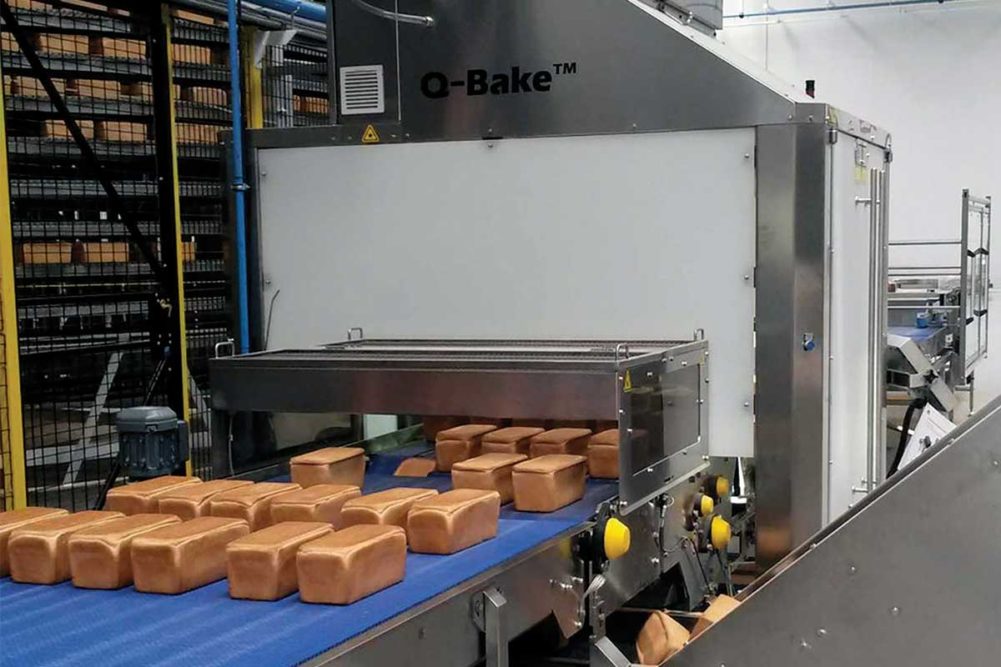When it comes to quality control, the current labor shortage cuts like a double-edged sword. Not only do bakeries and snack producers often lack the skilled workers to fully staff their high-capacity lines, but inexperienced operators may inadvertently allow unsatisfactory products to enter the marketplace.
“Given the tight labor market, finding trained employees who know what problems to look for in both personnel and equipment operation is one big issue,” noted Michael Wilks, global marketing director, Bunting Magnetics. “Having equipment in place to see what the human eye cannot see is another issue.”
To enhance capacity and sew up the safety net full of holes, bakeries are investing in automation to replace those manual tasks of the past.
“One plant I visited reduced its labor by 50%, and it now has higher throughput than before,” said Yuegang Zhao, chief commercial officer, KPM Analytics. “They did that by adding automated packaging equipment, vision systems and automated rejection devices to replace manual inspection and significantly reduce the number of people they have on the production line.”
At many bakeries, the shift to retail from foodservice during the pandemic has also required significant reconfiguration of packaging lines that raises concerns about product assurance.
“There was a high demand for product inspection equipment to ensure that no foreign material or quality defects were present,” recalled Ken Falk, regional sales representative, Eagle Product Inspection. “Today, many large retail customers are requiring end-of-line X-ray product inspection to ensure quality and minimize risk.”
Determining which inspection system is best typically involves identifying what elusive threats lurk inside a bakery, whether it’s metal, glass or plastic that’s found in the production department.
“The smaller the foreign material is, the more elusive it will be to metal detectors or X-ray machines,” said Todd Grube, Heat and Control product manager for inspection systems. “With X-rays, the lower the density of the foreign material, such as plastics or glass, the harder it is to detect.”
Metal detection is best for identifying conductive shards and pieces while X-ray technology checks for differences in material density and vision for foreign matter on the surface. However, several companies are incorporating multiple types of technology to create more comprehensive inspection systems. TDI Packsys, for instance, has combined its X-ray technology with a vision system in a single unit to increase its ability to find wood on the surface or different types of plastic.
“We can do size detection or identify little pieces of paper as long as it’s on the surface, so it greatly expands what X-ray technology was able to do previously,” said Kyle Hermes, vice president, TDI Packsys.
While some retailers are now requiring X-ray inspection by their suppliers, that doesn’t mean it’s better than metal detection.
“Given that metal is the No. 1 high-risk uncontrolled contaminant source, metal detection should be a given,” said Eric Garr, regional sales manager, Fortress Technology. “It is never worth replacing a metal detector with an X-ray machine, as users will lose virtually all detection of low-density alloys unless a very large chunk presents itself, like aluminum. An X-ray machine can be added to a line if there are specific needs, such as potential contaminants that won’t be detected with a metal detector.”
Mr. Grube pointed out that metal detectors and X-ray machines have different strengths and weaknesses, and using both in conjunction with each other can maximize product safety.
“X-ray machines allow operators to detect foreign objects or to see large gaps in packaging; metal detectors can only alert operators to the presence of metals,” he explained. “One advantage of using X-ray inspection is the ability to find more than just metal.”
The exception is aluminum, a very low-density metal where metal detectors may outperform X-ray machines. Mr. Grube added metal detectors have a much lower purchase price and cost of ownership than X-ray inspection.
Mr. Hermes said the next big push involves dual energy, which looks at molecular composition.
“No longer is X-ray technology limited to density composition,” he observed. “We’re able to detect everything based on molecular composition.”
With the influx of new employees and lack of experienced workers, bakeries and snack producers rely on advances in technology and data management to avoid being in a compromising situation when it comes to producing safe, quality products for the retail and foodservice markets.
This article is an excerpt from the September 2023 issue of Baking & Snack. To read the entire feature on Quality Assurance, click here.






